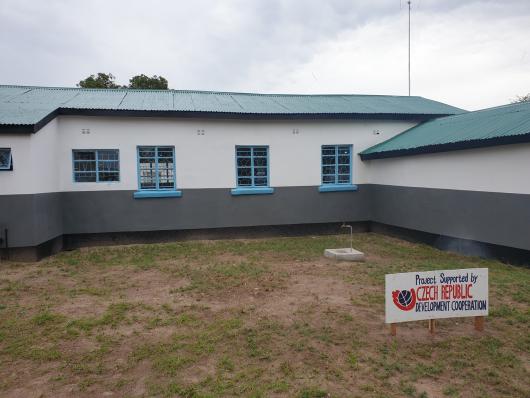
Local small scale projects implemented in Zambia and Malawi in 2021
24.11.2021 / 10:27 | Aktualizováno: 24.11.2021 / 10:46
In 2021, the Embassy of the Czech Republic in Lusaka supported three local small scale project implemented in Zambia and Malawi, which have helped to improve access to clean water, education and health care.
Thanks to one of the projects, implemented by Njovu Zambia, a new school building was built at the Katongo combined school in Mongu District. The Czech Republic had contributed significantly to the establishment of the school in recent years through development cooperation. However, the school no longer had the capacity to cope with the long-term increase in the number of pupils. The new building houses three classrooms and a staff room. All the rooms were provided with furniture and other necessary equipment. The capacity of the school and the quality of teaching have thus been significantly enhanced.
Another project consisted in conversion of old hospital buildings into purpose designed library, skills laboratory & computer laboratory for the newly established Sancta Maria College of Nursing & Midwifery in Lukulu, run by the Diocese of Mongu. The Czech Republic's contribution enabled the renovation of the buildings and the purchase of furniture, medical equipment and other teaching aids and textbooks. The opening of the collge means that for the first time that young people, and especially girls, from Lukulu and Mitete Districts have the opportunity to obtain higher education locally. At the same time, the college will contribute to addressing the shortage of qualified medical personnel in Zambia.
The third project was implemented in Malawi by Tingathe Development Forum. Eight shallow wells were dug and equipped with hand pumps in a rural area in the Nkhotakota District. More than 10,000 local people have thus for the first time obtained a reliable source of safe drinking water. Selected community representatives were trained in the management and maintenance of the wells. The project has thus made a major contribution to reducing the incidence of waterborne diseases among the local population and at the same time improving their quality of life by saving time previously spent on fetching water from more distant sources.








Follow us on